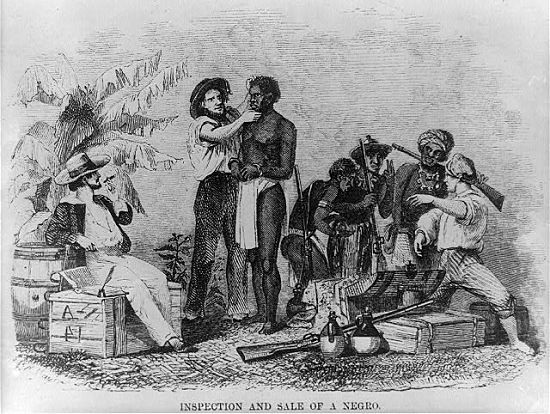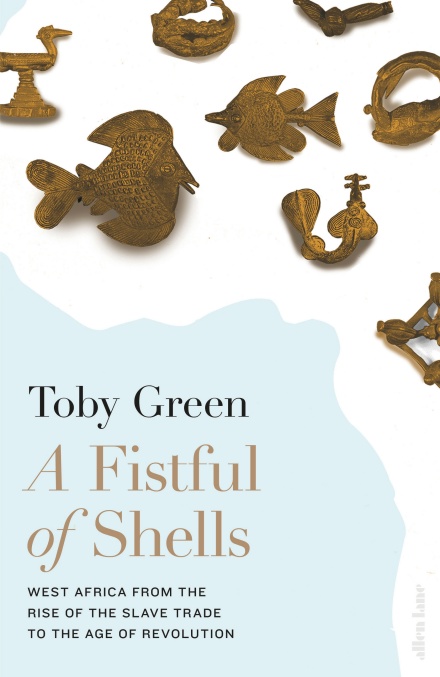 International Debate
International Debate Understanding the Slave Trade

I have long thought that sociologists should read more history. It might correct some of their sweeping generalizations about the emergence and development of Western societies. This reflection has been reinforced by a recent book, A Fistful of Shells: West Africa from the Rise of the Slave Trade to the Age of Revolution by Toby Green, a historian at Kings College London. Area specialists may, of course, question elements of the analysis – but it is an extraordinary work of scholarship that dismantles many myths about African societies.
Green exposes the error of representing Africa as a Dark Continent, largely isolated from world history until the arrival of European travellers in the late 18th and early 19th centuries paved the way for colonial annexation. Trade routes across the Sahara were a source of cultural and economic exchange from at least the 11th century. These interactions were reinforced by the development of Atlantic coast routes, initially by Portuguese traders, and subsequently by the Dutch and the English, during the 15th and 16th centuries. From a very early point, the sea routes were also the source of interchanges with Brazil, the Caribbean and the colonies of Virginia and the Carolinas.
The book is essentially a study in comparative political economy. Unlike many anthropological and sociological approaches, Green treats the societies of West Africa as proto-states, comparable to their contemporaries in Europe. Although there is no direct reference, it is the flat epistemology familiar to STS scholars. How, under a range of climatic, resource and demographic conditions did societies co-evolve to produce an outcome where one set dominated another?
The slave trade is, inevitably, central to this account. Green sees it as an export of human capital that might have generated surplus value in Africa but actually does so in the Americas, accelerating the economic growth and relative advantage of European countries. His systemic approach underscores the moral complexity of this activity and the simplistic nature of many current debates. In particular, it brings out the extent to which the slave trade is a co-production of traders, from a variety of backgrounds, and local African elites.
When the Atlantic traders first came to West Africa, they found slavery as an established social institution, linked to existing trading networks with North Africa and the Arab World. Captives from warfare and people perceived as ‘troublemakers’ were commonly enslaved and, to some extent, traded for currency. The Europeans did not initially join these networks. Indeed, Green documents how small-scale and vulnerable their enterprises were. They were heavily dependent on licences from local rulers to build settlements and carry on economic activities. Their military technology did not confer any decisive advantage in the face of the superior numbers and sophisticated tactics of their hosts’ armies. The slave trade developed gradually as it became mutually advantageous for the local states to export people to the New World in response to the labor shortages that developed there. Although Green does not make this point, we might recognize the extent to which European diseases depopulated a continent with no prior exposure to them. Enslaved people from Africa were a replacement labor force. Africans had agricultural and craft skills that were otherwise in short supply. As such, labor importers were willing to pay higher prices than those offered by the traditional buyers.
While some West African states refused to join the trade, they were eventually forced to do so or face economic and military decline relative to their neighbors. A particular strength of Green’s approach is his recognition that the trade was based on currency. He challenges views of payments in cloth, copper bracelets or cowrie shells as exploitative by showing that such items were well-established media of economic exchange across the region. They were no more or less irrational as a store of value than gold or silver. A piece of cloth of agreed size and quality was a symbol in much the same way as a bank note. Although inflation became a problem as traders organized the industrial production of these items, local elites were increasingly able to cement their position through their command of these resources. Globalization drove an increase in inequality within many West African societies.
By the early 19th century, this inequality was leading to movements of resistance and revolt, particularly centered on the spread of Islam across the region. A particular strength of Green’s account is his linkage between the slave revolts seen in Brazil and the Caribbean, risings against elites in West Africa and the insurgencies of the 1830s and 1840s in Europe. Again, this is not his point, but it might be arguable that the slave trade would have been eliminated by actions in West Africa regardless of the humanitarian campaigns of well-meaning Europeans.
Where does this leave our understanding of the legacy of the slave trade? Clearly, it does not compromise our revulsion at the idea of trafficking in human beings or the horrors of the Atlantic passage and plantation life. We rightly need to ensure that they are incorporated into our national stories and inspire a continuing commitment to fight current forms of abuse. However, Green’s work also restores the agency of West Africans to the narrative in ways that complicate calls for reparations, apologies or restitution. Europeans did not invent slavery or the slave trade. Many West African elites were willing partners, knowingly participating in economic transactions that made sense on their own terms and secured their own status for many years. As Green points out, this may well contribute to an enduring suspicion of state actors by ordinary citizens throughout the region.
As the market worked itself out over several hundred years, human capital was exported from West Africa to Europe and the Americas in ways that benefited some participants at the expense of others. However, this was not the result of conscious plans, strategies or intentions that might provide an easy basis for ascribing fault, blame or guilt.






















































































